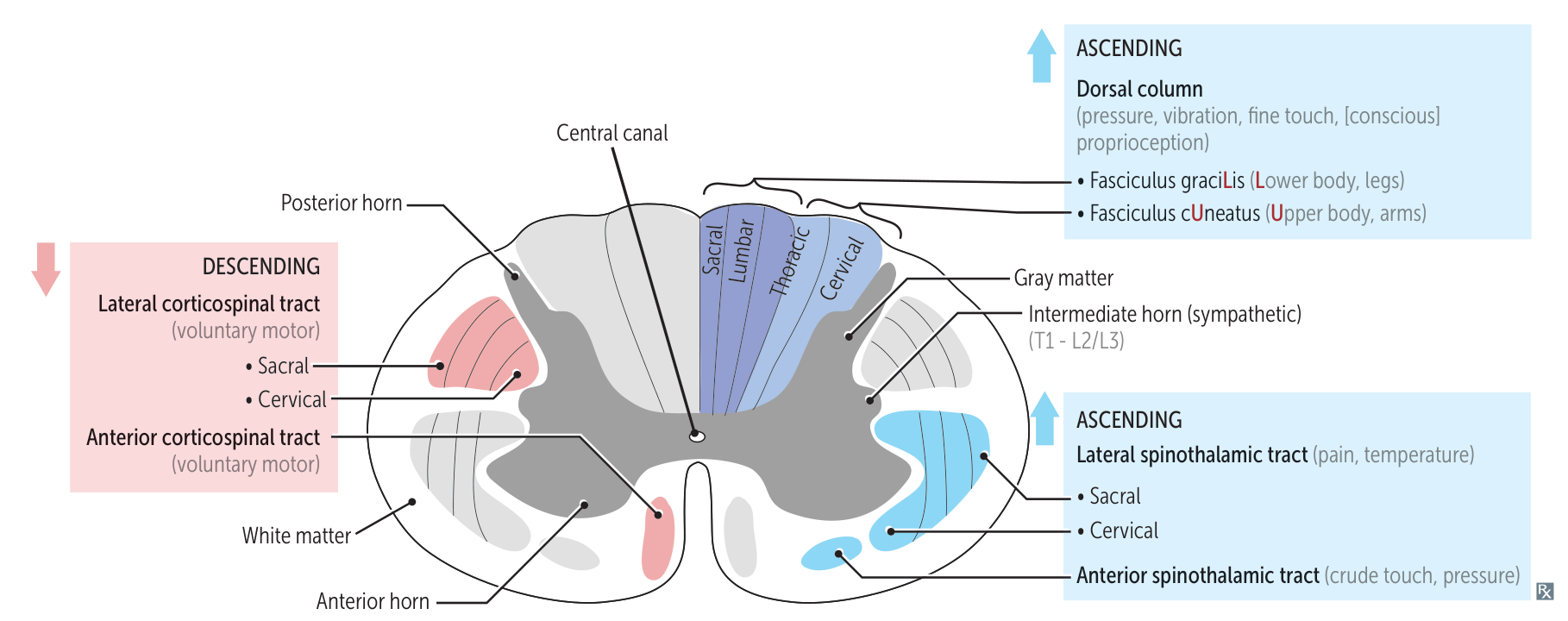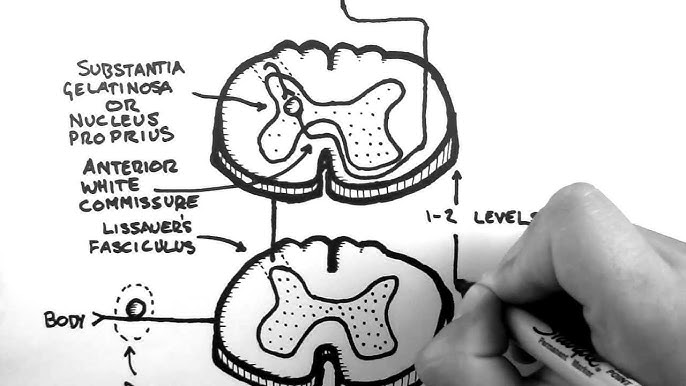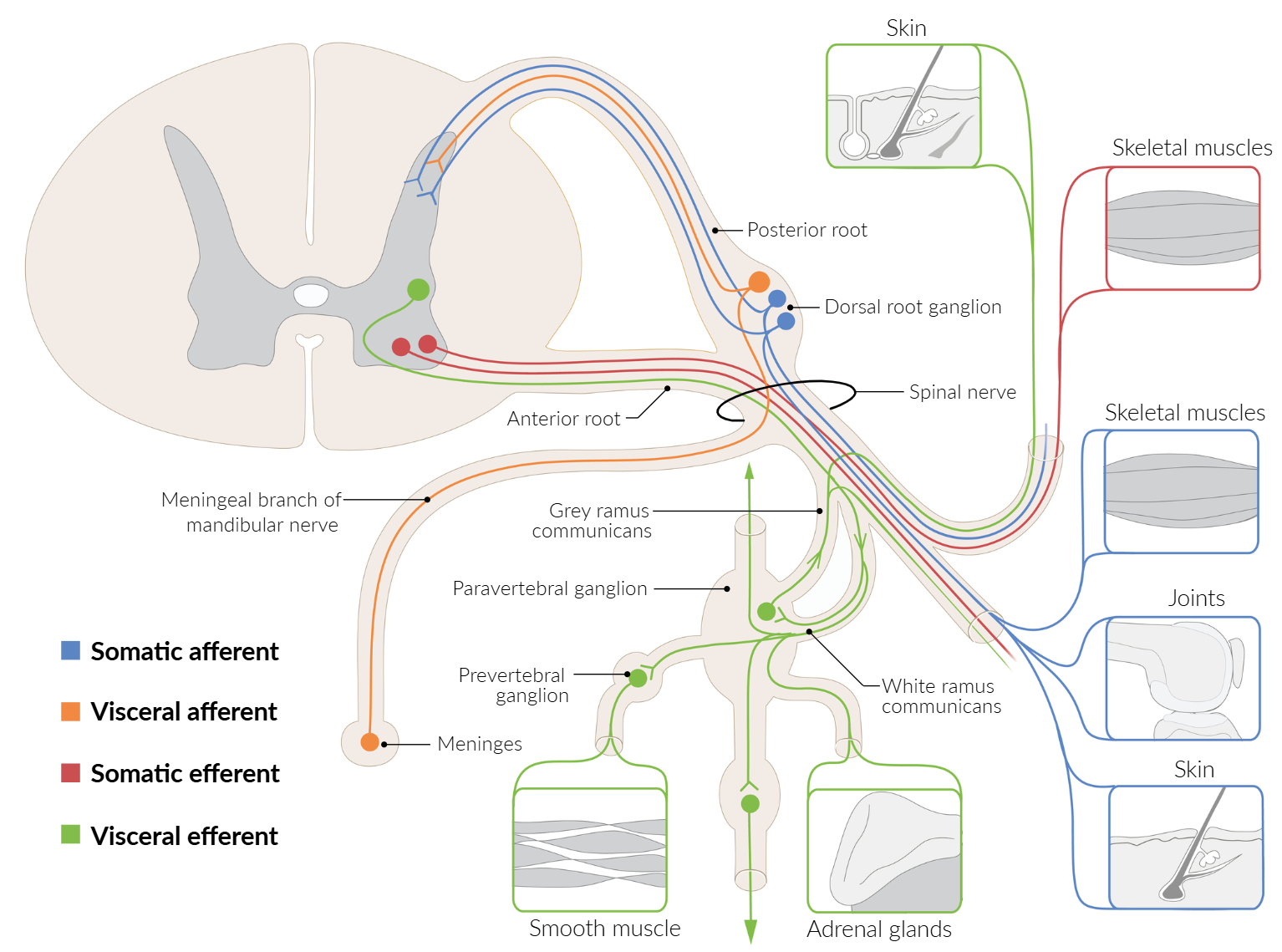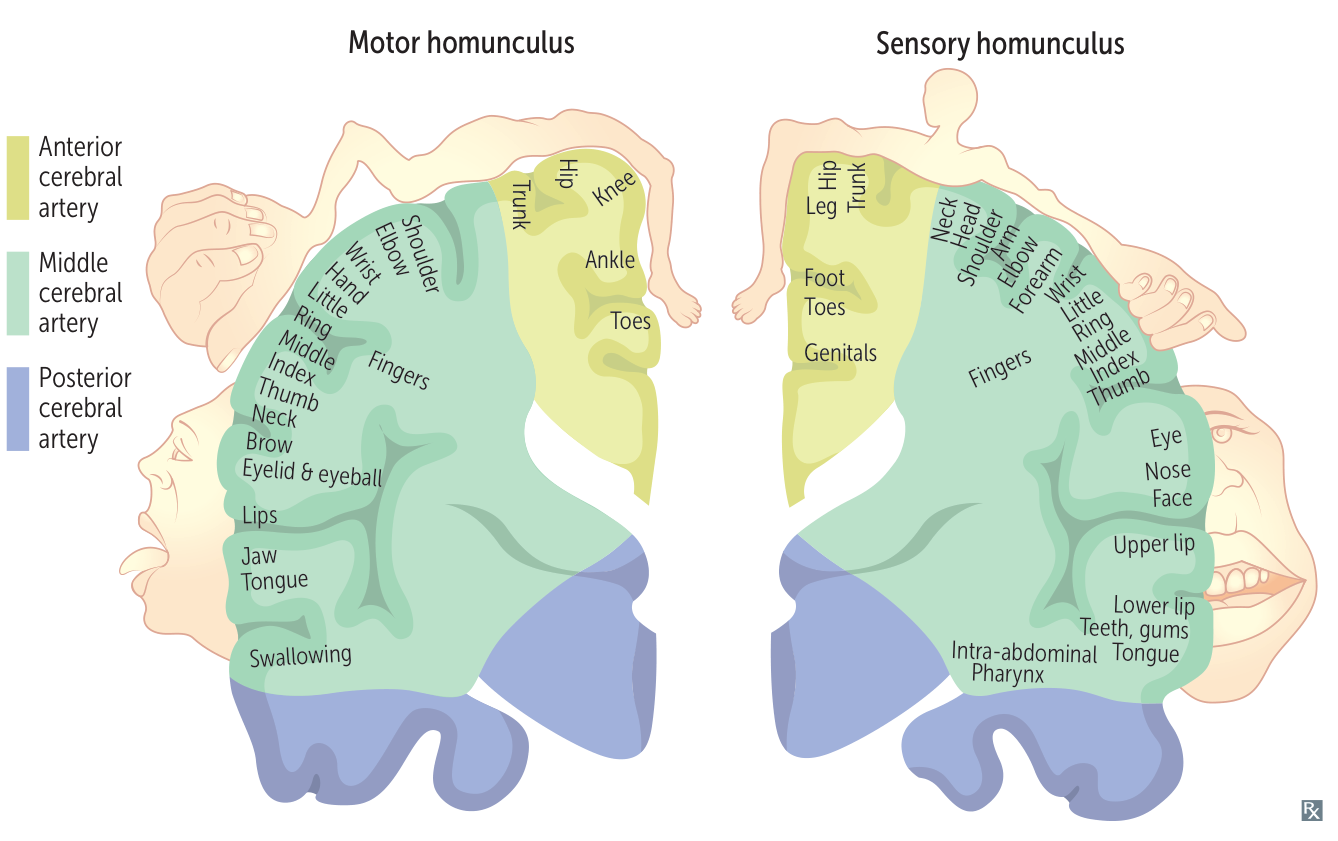Spinal cord

Cross-sectional anatomy
Drawing 2025-07-26 09.26.44.excalidraw
⚠ Switch to EXCALIDRAW VIEW in the MORE OPTIONS menu of this document. ⚠ You can decompress Drawing data with the command palette: ‘Decompress current Excalidraw file’. For more info check in plugin settings under ‘Saving’
Excalidraw Data
Text Elements
Spinothalamic tract
Dorsal column
Corticospinal tract
Embedded Files
0f69b6f90704f2e1846fca80217e793a8633730b: Pasted Image 20250726092659_518.png
Link to original
- Gray Matter (Neuron Bodies):
- Dorsal (Posterior) Horn: Sensory input (pain, temp, touch).
- Ventral (Anterior) Horn: Motor output (Lower Motor Neurons - LMNs).
- Lateral (Intermediate) Horn (T1-L2): Sympathetic nervous system.
- White Matter (Axon Tracts):
- Dorsal Columns: Ascending sensory (vibration, proprioception).
- Lateral & Ventral Columns: Corticospinal tract (motor), Spinothalamic tract (pain/temp).
- Anterior White Commissure: Decussation site for spinothalamic tract.
Mnemonic
- If it’s in the back (dorsal), think SENSORY.
- If it’s in the front (ventral), think MOTOR.
Ascending (Sensory) Tracts
- Dorsal Column-Medial Lemniscus (DCML)
- Function: Fine touch, vibration, proprioception, pressure.
- Location: Posterior (dorsal) funiculus.
- Fasciculus Gracilis: Medial; info from lower body (legs).
- Fasciculus Cuneatus: Lateral; info from upper body (arms).
- Decussation: Medulla (as internal arcuate fibers), then ascends as medial lemniscus.
- Path: 1° neuron (DRG) → ascends ipsilaterally in dorsal column → synapses in nucleus gracilis/cuneatus (medulla) → 2° neuron decussates → ascends to VPL of thalamus → 3° neuron to somatosensory cortex.
- Somatotopy: Fibers are added laterally. Sacral/leg fibers are most medial (Fasciculus Gracilis), and cervical/arm fibers are most lateral (Fasciculus Cuneatus). “Legs are in the middle.”
- Spinothalamic Tract (Anterolateral System)
- Function: Pain, temperature, crude touch.
- Location: Anterolateral funiculus.
- Decussation: Anterior white commissure at/near the level of entry into the spinal cord.
- Entry & Lissauer’s Tract: The primary pain/temperature neurons (1st order) enter the spinal cord and travel within the Tract of Lissauer, where they can ascend or descend 1-2 spinal segments before synapsing.
- Synapse: They then synapse on the second-order neuron in the dorsal horn (substantia gelatinosa).
- Decussation: The axon of this second-order neuron is what immediately crosses to the contralateral side via the anterior white commissure to form the spinothalamic tract.

- Path: 1° neuron (DRG) → synapses in dorsal horn → 2° neuron decussates → ascends contralaterally → synapses in VPL of thalamus → 3° neuron to somatosensory cortex.
- Somatotopy: Cervical/arm fibers are most medial, and sacral/leg fibers are most lateral. “Pain in the ass is on the outside.”
Descending (Motor) Tracts
- Lateral Corticospinal Tract
- Function: Voluntary motor control of limbs (distal muscles).
- Location: Lateral funiculus.
- Decussation: Pyramidal decussation in the caudal medulla.
- Path: Upper Motor Neuron (UMN) in primary motor cortex → descends ipsilaterally through internal capsule → decussates in medulla → descends contralaterally in lateral corticospinal tract → synapses on LMN in ventral horn.
- Somatotopy: Cervical/arm fibers are most medial, and sacral/leg fibers are most lateral.
- Hypothalamospinal Tract (Sympathetic)
- Function: Provides sympathetic innervation to the body.
- Location: Lateral funiculus.
- Decussation: None (descends ipsilaterally).
- Path: Hypothalamus → descends through brainstem and lateral funiculus of spinal cord → synapses on preganglionic neurons in the lateral horn (T1-L2).
- Clinical Pearl: A lesion anywhere along this path (e.g., lateral medulla, cervical spinal cord) causes ipsilateral Horner’s Syndrome (Ptosis, Miosis, Anhidrosis).
| Tract | Organization | Reason |
|---|---|---|
| Dorsal Column | Legs Medial, Arms Lateral | Ascends before crossing; new fibers are added laterally. |
| Spinothalamic | Arms Medial, Legs Lateral | Crosses then ascends; existing fibers are pushed laterally. |
| Corticospinal | Arms Medial, Legs Lateral | Fibers exiting soonest (arms) are medial; long-traveling fibers (legs) are lateral. (“exit” is on the inside, not the outside.) |
Nerve roots

- Anterior roots carry motor (efferent) fibers that control skeletal and smooth muscle.
- Dorsal roots carry sensor (afferent) fibers that transmit somatosensory information.
Homunculus

